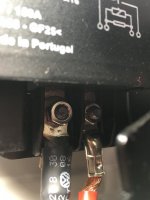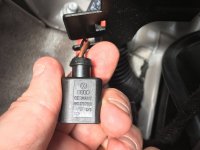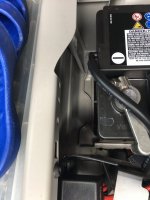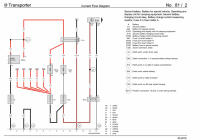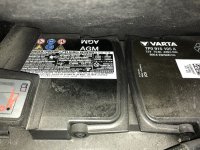The bars on the chargers are deceiving at best. The problem is, you can't tell how much charge is in a lead acid battery when it is eithr being charged, or being used - so teh only time you can tell, is at night, with ALL loads off - no lights , nothing.
When you charge a battery, even a low charge, it immediately lifts the voltage - significantly - even though very little charge may be going in. Put a 50% battery on solar charge with, say 4 amps, and it will jump to max bars very quickly as the battery climbs over 13.8 volts. Switch off the solar and the voltage, and therfore the bars, will drop quickly to where they really belong. Under charging the battery can climb as high as 14.4 volts as you have to put more in than the battery voltage, or it won't take any charge.
Same with loads. Switch a fridge on with a 100% full battery and it will drag it to around 12.2 volts - which the charger will see as around half empty!
Then add the complication of charging AND using loads, and it never makes sense !

Below is what I include with all kits. In summary, the real way to tell is to switch off all loads and look at night A full battery is 12.6v at rest (no charge or load)
A note below about the battery graphic on the MPPT charge controllers:
The battery graphic symbol with the bars in it is quite misleading. This is because you can’t tell if a battery is full or empty when it is under load (being used), or , being charged.
A full battery rests at 12.6 volts. This is at “rest” – i.e. not being charged, nor being used. Basically, disconnected. It is flat when it is at 11.9 volts
The moment you start charging it (i.e. solar charging, or split relay charging with the engine running) it’s impossible to tell it’s state as the charging raises the voltage of the battery, masking it’s true state of charge. The same is true when you use the battery (put it under load). As soon as you start using the battery its voltage will drop. You could use this new voltage to ascertain how full/empty it is, but, you’d be wrong as as soon as you switched off the load, the battery voltage climbs back up a fair bit.
As you can see , it’s hard to know the battery level when in use/being charged. The battery might be nearly full, but your fridge drags it down to 12.24 volts – which you’d think is half empty, but when you switch the fridge off, it climbs back up to 12.45 volts (75% full). Similarly, it might be sunny, which lifts the voltage high as the solar is doing its trick, but when the sun goes in, the voltage drops a bit.
With not much load, and some decent sun, the battery will eventually show as full because it will have climbed to 14.4 volts. The charger thinks 11.8 volts is empty (correct) and that 13.8 volts is full (incorrect – it’s true when being charged, but not when it isn’t being charged – batteries are charged to over 14 volts as part of the charging process). This is why the battery icon is misleading.
The best way to get an idea of the battery capacity is to look at the voltage, not the icon. Switch as many thirsty things off, like your fridge etc. and look at the voltage. This will only work at dusk/night/in grey weather as the solar charging during the day will skew the figures. As a good guideline:
12.60v . . . . . . . . . . 100%
12.45v . . . . . . . . . . 75%
12.24v . . . . . . . . . . 50%
12.06v . . . . . . . . . . 25%
11.89v . . . . . . . . . . 0%
It is not unusual to see your battery drop to the low 12’s at night when the fridge is running, with no sun, then recover to over 13v in the morning as the sun comes up. How fast it drops at night depends on the capacity and age of your leisure battery. As a guide, a new 100Ah battery will run a compressor fridge for around 2 to 3 days with no charging help.



